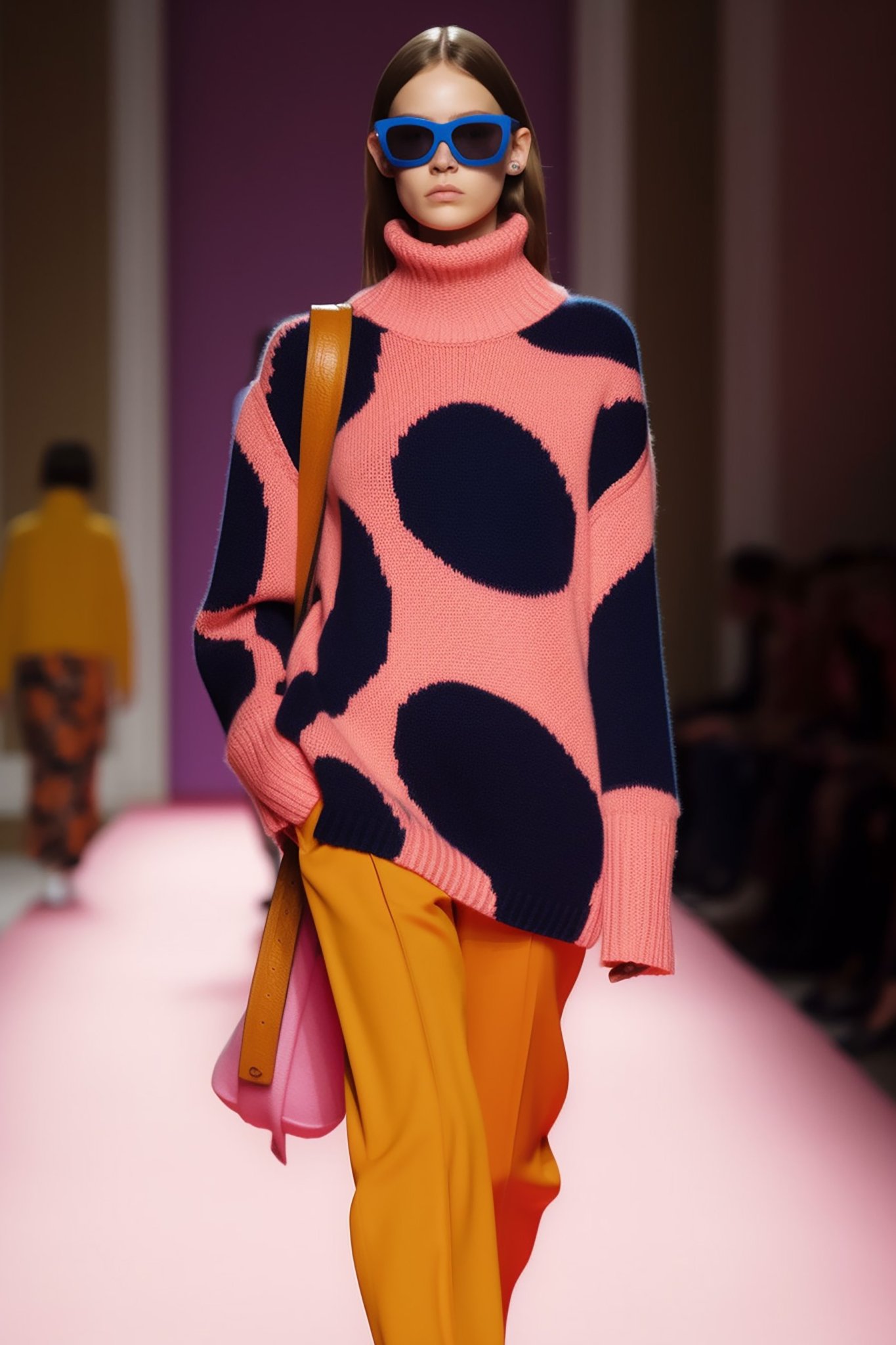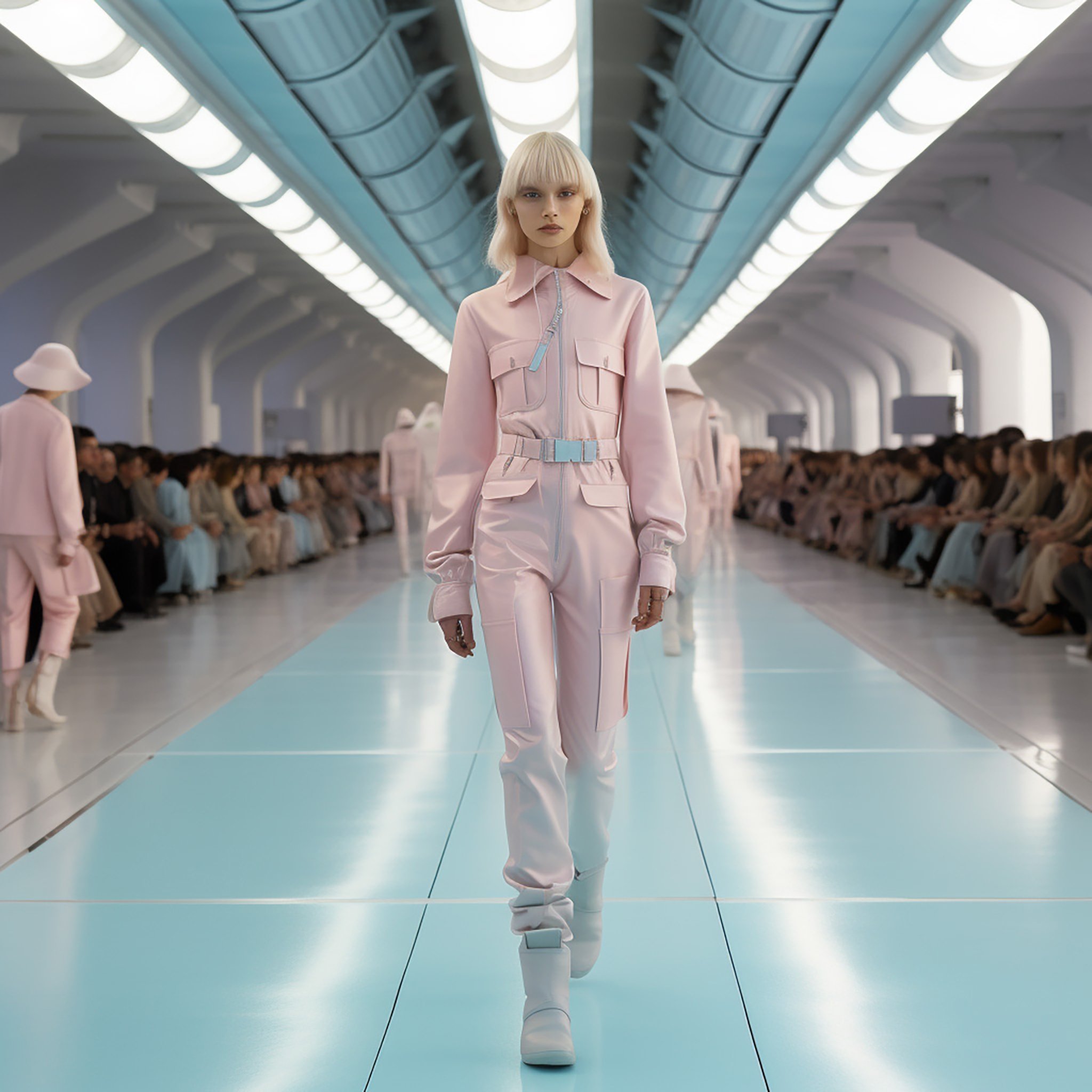Al Fashion Week
Artificial intelligence (AI) is becoming ever more prominent, moving from its origins in technology into creative fields (e.g., fashion). One example of this is the AI Fashion Week that took place April 20-21 in New York’s Spring Studio.
From top to bottom: Davide Minganti’s YarnsKnitwear, 3POINTZERO’s Al-R, and H Wang’s siber underwater
Open to anyone, designers had to submit 15-30 images, with five of them being detail shots. Participants were encouraged to include additional images of backstage, front row, and street style shots to represent their collection fully. These collections had to be prêt-à-porter designs, as the winners' creations will be produced. Other guidelines can be found here; the most prominent including that designers have carte blanche on their show production and to use a variety of models.
All the submissions can be viewed here, and viewers can vote for their favorites until May. A panel of industry experts that includes Tiffany Godoy, Veronique Halbrey, and Michael Mente, among others, will serve as judges and the ten collections with the highest number of votes will serve as the pool from which three winners will be announced and their collections will be produced to sell online.
There were more than 350 submissions with 133 chosen to be displayed, marking an important turn in the cross-section between fashion and technology.
With such wide parameters, a variety of themes and designs were displayed. Despite this, there is a lack of diversity among the models. Traditionally, models are chosen by a person who is subject tohis/her unconscious biases. Historically, the fashion industry has been criticized for its lack of diversity, as it often favors specific body types and physical appearances. However, with the use of AI in model selection, the fashion industry has the potential to become more inclusive and representative of diverse body types and appearances. As a result, AI models potentially have greater diversity and inclusivity. However, after looking through the chosen submissions, there is still a lack of diversity in AI Fashion Week’s models.
The largest group of designers were from the US, comprising 34 of the total participants. The UK and Italy were second and third highest represented with 12 and 10 designers respectively. Other countries include Columbia, Belarus, and Kuwait.
Participants ranged from 20 years old to more than 80. The average age was 36, with .09% being 27 years old. {0.9 is a low %] With these statistics in mind, several trends were evident. Approximately 14% of the collections used all female models or a majority of females. Most of these models were Caucasian and/or light skinned. Three collections had majority non-white models, though many included a fair percentage of non-white models.
Other diversity was minimal or not present. The collections Climate Change and Mushroom Dreamscape SS highlighted a model in a wheelchair. Only five included plus sized models.
From top to bottom: Matthieu Grambert’s Climate Change, Sogand Nobahar’s Mushroom Dreamscape SS, Rachel Koukal’s Soft Apocalypse
Mother Land by Irkha Sofiia included all pregnant models, as the designer’s theme focused on mothers to be, but few others were obviously pregnant. Matthieu Grambert’s Climate Change also included a singular pregnant model.
From top to bottom: Irkha Sofiia’s Mother Land, Matthieu Grambert’s Climate Change
Age diversity was relatively small as well; only seven had models that appeared to be over 50. Notably, the collection Petite Mains in their 60s featured models only in their 60s.
Pictured: Petites Mains’ Petites Mains in their 60s
The use of AI in model selection has the potential significantly to increase diversity in the fashion industry. However, any future AI Fashion Weeks have room to grow. As AI and the fashion industry continues to evolve, they have the potential to transform the fashion industry beyond model selection. As seen in some of the designers’ collections, AI could mean ready to produce personalized clothing, techwear, and more. However, ultimately it will be up to fashion industry leaders to ensure that AI is used in a way that promotes diversity and inclusion.
Article by Katie Jones, Contributor, PhotoBook Magazine
Tearsheets by Summer Safi, Contributor, PhotoBook Magazine













